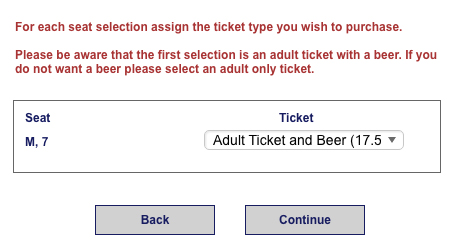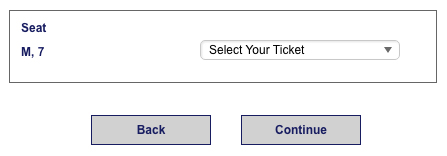
eCommerce UX Best Practices: Good Ethics Is Good UX & Good eCommerce
Earlier this year a German court ruled that Amazon’s ‘dash’ buttons violated that country’s consumer protection laws. These super convenient networked devices stick on your fridge or washing machine to order things like laundry detergent and pet food with the simple push of a button. German law requires shoppers to have price information at the time of their transaction. Amazon’s buttons, designed to be convenient, only provided a product logo and a button so users wouldn’t know if a price had increased, decreased or how it differed from competitors.
At Sandstorm, our core eCommerce UX principles include:
- Transparency in pricing
- Giving users the ability to quickly and clearly modify or cancel an order
- Providing ways to quickly decline cross-sells and up-sells
While users have come to expect a standard ‘exit through the gift shop’ process, they are also savvy enough to know that eCommerce sites like Amazon and Expedia may not be showing them the cheapest options first.
Our user research has shown that the current eCommerce shopper is one who will prioritize convenience as much as cost. We refer to this persona as the ‘Energy Manager’. She has little time, is often multi-tasking, desperately craves convenience, and expects competitive pricing. From a saving money standpoint, the Energy Manager will apply all of the coupons and promotional codes she can find and will split orders to use more coupons.
She is also very wary of sites that engage in deceptive practices or make her jump through hoops to complete a transaction. Often these are the sites that do not get return visits.
There Is A Cost For Bad Behavior
While you may be able to frustrate users with complicated interfaces or processes to try and get them to do what you want, ultimately the only thing you’ll achieve is user frustration and brand denigration. Even worse, you’ll probably just earn yourself more customer service calls and brand-eroding, sometimes viral, dreadful complaints across social media channels without achieving the business outcome you desired.
But We Really Want To Sell You That Beer
For example, a Chicago neighborhood movie theater uses its own non-responsive website to sell tickets. The theater uses a drop down for the type of ticket the user would like to purchase.

While lots of folks enjoy a good beer with their movie, it’s apparent that not everyone does because the theater added a note to try and prevent users from making the wrong selection.
So here you have a situation where the theater is defaulting a choice that will make them more money by upselling a beer but have clearly run into the issue of users making the default selection by mistake and then complaining. The resolution to these complaints? Add more copy (i.e. noise) to try and avoid the error.
A transparent, ethical, best practice eCommerce UX solution would be:

This way the user has to intentionally make the selection that applies to them with the most common selection listed first. The business still gets to offer the beer upsell but doesn’t have to deal with as many complaints and no copy is required to work around the error case.
Being Good Pays Off
Users understand that eCommerce sites are businesses and are intended to make money. At Sandstorm, we have discovered that when a businesses’ profit model is clear, it tends to engender more confidence from the user as the best digital experiences are centered around a value exchange (i.e. “I give you my email and you give me a deal”). eCommerce sites that follow UX best practices provide clear pricing information along with relevant up-sells and cross-sells and easy ways for the users to get what they want quickly and easily are the ones who will earn their users’ loyalty. Good UX and good eCommerce will pay off in smoother transactions, less customer support and more repeat business.
Does your eCommerce site provide the pricing transparency and easy shopping experience that users want and good business demands? A great way to find out is with a standardized heuristic evaluation that grades your site on 10 common usability metrics. Contact us to get started.




